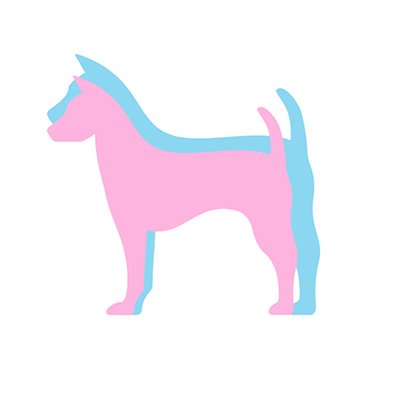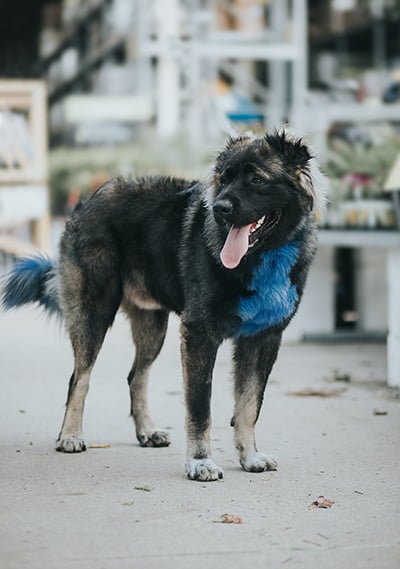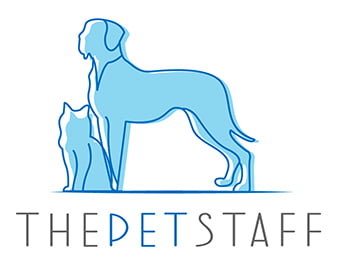Russian Bear dog, also known as the Caucasian shepherd dog and Caucasian mountain dog, is a powerful, large dog originally bred to protect livestock and guard homes in the Caucasus Mountains of Russia. With their formidable size, thick coat, and fierce loyalty, Russian bear dogs have gained popularity globally over the last 100 years. They are often used as working dogs, guarding, or bear-hunting dogs and are also popular as household family pets.
When deciding if a Russian bear dog is the right breed for you, it is important to consider all factors, from genetics and personality to needs and adaptability. The following guide dives deep into the Russian bear dog, giving you an overview of what life is like with this companion.
Breed Characteristics
Temperament | Protective, fearless, loyal |
Intelligence | Moderate |
Affection/Friendliness | Devoted to family, wary of strangers |
Trainability | Low to moderate |
Mental Stimulation | Moderate – obedience, guarding tasks |
Exercise Needs | Moderate – daily walks, yard play |
Apartment Living | Not Suitable |
Family Friendly | Moderate, best with experienced owners |
Pet Friendly | Low, may be aggressive without socialization |
Drooling Level | Moderate |
Energy Level | Moderate to high |
Loneliness Tolerance | Low |
Adaptability | Low |
Tendency to bark | High |
Origin
During the twentieth century, breeders began crossing different mountain types and hunting dogs in the Caucasus Mountains of Russia. By taking some of the most notable traits of other dog breeds in the area, the caucasian mountain dogs were bred to be the best example of similar breeds based on size, power, structure, and attractiveness. The breed was officially accepted by Federation Cynologique Internationale in 1984 and has been used ever since in Russia to serve as livestock guardian dogs and has evolved to work in other ways, such as being used as prison guard dogs in Russia. Today, this breed is recognized by the American Kennel Club and is a member of the United Kennel Club.

Breed Overview
Height: 27–30"
Weight: 120–170 lbs
Height: 25–28"
Weight: 100–150 lbs
Breed Group
Working
Life Span
10-12 years
Coat
Thick double coat
Coat Length
Long
Hypoallergenic
No
Shedding Level
High
Size
Due to their origin, Caucasian shepherd dogs were bred to be "giant" in size. Unlike many other dog breeds and animals in general, males and females are typically around the same size. While full-grown females may be slightly shorter and weigh less, males usually weigh 120-170 pounds and stand 27-30 inches tall.
Because this is a large dog breed, puppies grow quickly. A one-month-old puppy may only weigh about 8-15 pounds and grow up to 55-130 pounds by four months. While they grow fast, Russian dog breeds may not be fully grown until they are about two years old.
Some people often confuse the Russian bear dog with a Tibetan Mastiff, but Russian bear dogs are actually about 15% larger.
Personality
As a giant dog bred for working at some capacity, Russian bear dogs are extremely active, loyal, intelligent, and confident companions. They are not "gentle giants' ' like other large dog breeds as they are extremely protective, making them an excellent guard dog. Russian bear dogs are intolerant to strangers, but are known to be calm and cuddle with their owners, to whom they are extremely loyal.

Source: Unsplash
Temperament
Because of its origin and natural instincts, many people believe that Russian bear dogs cannot be family-friendly companions. But this is not necessarily true. Though it may take some work, Russian bear dogs can be adapted to a family environment with children.
Proper training and socialization for this breed is extremely important, especially if young children are in the household. While this dog can be calm and laid-back, it is necessary for them to be consistently active and stimulated and to be comfortable with small children and handling. As long as the dog does not see the children as a threat, it will be extremely loyal to and protective of its family, including the children.
Russian bear dogs are also known for their barking tendencies, in which they bark fairly rarely, only if they suspect danger. With protective instincts, Russian bear dogs will naturally see strangers or other dangerous situations as a threat and will typically react aggressively or violently. With appropriate training, they can learn to react to these situations appropriately.
When taking into consideration the training, socialization, activity, and nutritional needs, this dog can be a good, family-friendly companion.
Diet/ Nutritional needs
As a giant breed, Russian bear dogs need to eat a large amount of high-quality dog food to become satiated. Like all other canines, this breed is an omnivore, meaning they eat meat and vegetables/plants. Like any dog, providing this breed with a healthy, nutrient-dense, balanced diet is important. It should be noted, though, that these dogs are also prone to obesity. By keeping the dog active consistently, feeding healthy, high-quality food, and keeping track of the dog's weight, you can prevent any potential issues with obesity.
If you have a puppy, you will need to feed food that is designed for giant breed puppies. This type of food is designed to be more nutritional and higher quality food than your average puppy food.
Meet with your veterinarian for their diet recommendations and specific food quantities for your dog.
Activity/ Exercise needs
Though they are large in size, these dogs are often referred to as relatively low-energy breeds. Because they are used to working, it is important to keep these dogs active as they may become anxious due to boredom. Activity can be physical but also mental stimulation, such as training and socializing, other mental games, or puzzles for dogs.
Activity is also important not only for their mental health but also their physical health. Consistent physical activity helps build cardiovascular health and endurance and prevents obesity. A large open or fenced backyard is ideal to allow the Russian bear dog to run, sniff, and explore freely. Consistent walks and activity of at least fifteen minutes twice daily are imperative for mental and physical health.
Appearance/ Colors
These dogs have naturally thick, long-haired coats as they were bred to work outside in the Russian mountains all year round. This double coat is often multi-colored and can be any color, such as brown, gray, black, cream, white, brindle, fawn, or apricot. White, black, and brindle are the most commonly seen combinations of colors, and solid-colored coats are possible but very rare.
The double coat of fur is made up of a coarse outer layer surrounding a soft inner layer. This dual layer of fur helps to protect the dog from cold temperatures and keeps them warm and from injuries due to its thickness.
Grooming needs
Regular grooming for this breed is a must. Shedding is expected due to the dual-layered coat, and consistent brushing at least once weekly can be beneficial to limit shedding and keep the dog comfortable. Regular hair cuts can be beneficial in preventing the dog from overheating in hot summer months, depending on its environment.
Other grooming needs include regular nail trims to prevent any discomfort of overgrowth and ear cleaning (read our recommended dog ear cleaners), as long-haired dogs can sometimes be prone to ear infections due to debris build-up.
Adaptability
It is recommended for Russian bear dogs to live in homes rather than apartments for several reasons. Most notably, having enough space to roam freely throughout the day is essential due to their protective nature.
These dogs are bred to live in a cold environment and definitely prefer colder climates. It is okay for this breed to live somewhere with warmer temperatures. But it is extremely important to keep the dog hydrated, have access to a cool home with shade and air conditioning, and groom often to prevent overheating and dehydration.
If you have other pets at home, it is also important to consider them. Russian bear dogs are bred to be hunters and shepherds, as they tend to feel threatened by other animals and do not often get along with other pets in the home. With the right training and socialization at a young age, a Russian bear dog can adapt to having other pets in the home.
Trainability
Caucasian shepherds are very smart and can learn training cues quickly, but they can become easily distracted due to their alertness and are often stubborn to training.
Proper training is especially important, not only because of stimulation but because the dogs are bred to be protective, often using violence or aggression by nature. Through appropriate training, the dog can learn to be protective and loyal without being violent toward anyone the dog perceives as a potential intruder or predator.
Life expectancy
Large-breed dogs are often expected to have a shorter life expectancy as compared to other breeds. With a proper diet, environment, and exercise, Russian bear dogs typically lie to around 10-12 years old.
Russian Bear Dog Cost
On average, you can expect to pay anywhere from $1,500 to $5,000 for a purebred Russian Bear Dog puppy. Owning a dog may seem costly at first, but it's also crucial to think about the ongoing expenses such as vet bills, grooming, and food costs in the long run. Unlike other dogs, Russian bear dog puppies do also grow quickly. Therefore, consider the cost of upgrading crates, beds, collars, etc.
If you plan on getting a puppy from a breeder, it is essential to research and buy from a reputable breeder. Look for reputable Russian bear dog breeders who specialize in Russian bear dogs. Ask for referrals from people who own a Russian bear dog and visit the breeder's facilities.
Potential Health Issues
The Russian bear dog is generally a healthy breed. But like any big dog, Russian bear dogs are prone to specific health issues, such as obesity, bloat, and hip dysplasia. But overall, they are healthier than most other purebred dogs.
Obesity
As previously mentioned, these giant dogs are prone to obesity, and this can easily be prevented with an appropriate, healthy diet and regular exercise.
Bloat
Bloat, also known as gastric dilatation and volvulus (GDV), is a condition that occurs in many large-breed dogs. It is a complication caused by the accumulation of gas or fluid in the stomach, affecting the digestive tract. This is an extremely dangerous situation and should be seen immediately if any signs are present, such as a swollen and hard stomach, retching without vomiting, drooling, excessive panting, and restlessness. To prevent this, you should monitor your dog's food and water intake to ensure they are not consuming too fast and avoid exercising immediately after a meal.
Hip Dysplasia
Another common issue in large-breed dogs is hip dysplasia, in which the hip joints become loose due to excessive pressure on the joint. You should consult your veterinarian for future recommendations if any pain or limping is noticed. Treatment for this injury may require surgery in addition to pain medications.
FAQ
Are Russian Bear Dogs Dangerous?
While Russian bear dogs' size and strength can be intimidating, they are not inherently dangerous dogs. Like any breed, a dog's temperament is largely influenced by its upbringing and socialization.
Are Russian Bear Dogs Good With Kids?
Russian bear dogs are very large dogs when fully grown, and if they are socialized properly and trained from a young age, they can be good with kids. But at the same time, their large size and powerful build mean they may accidentally knock over or intimidate small children if they are not properly trained and supervised.
